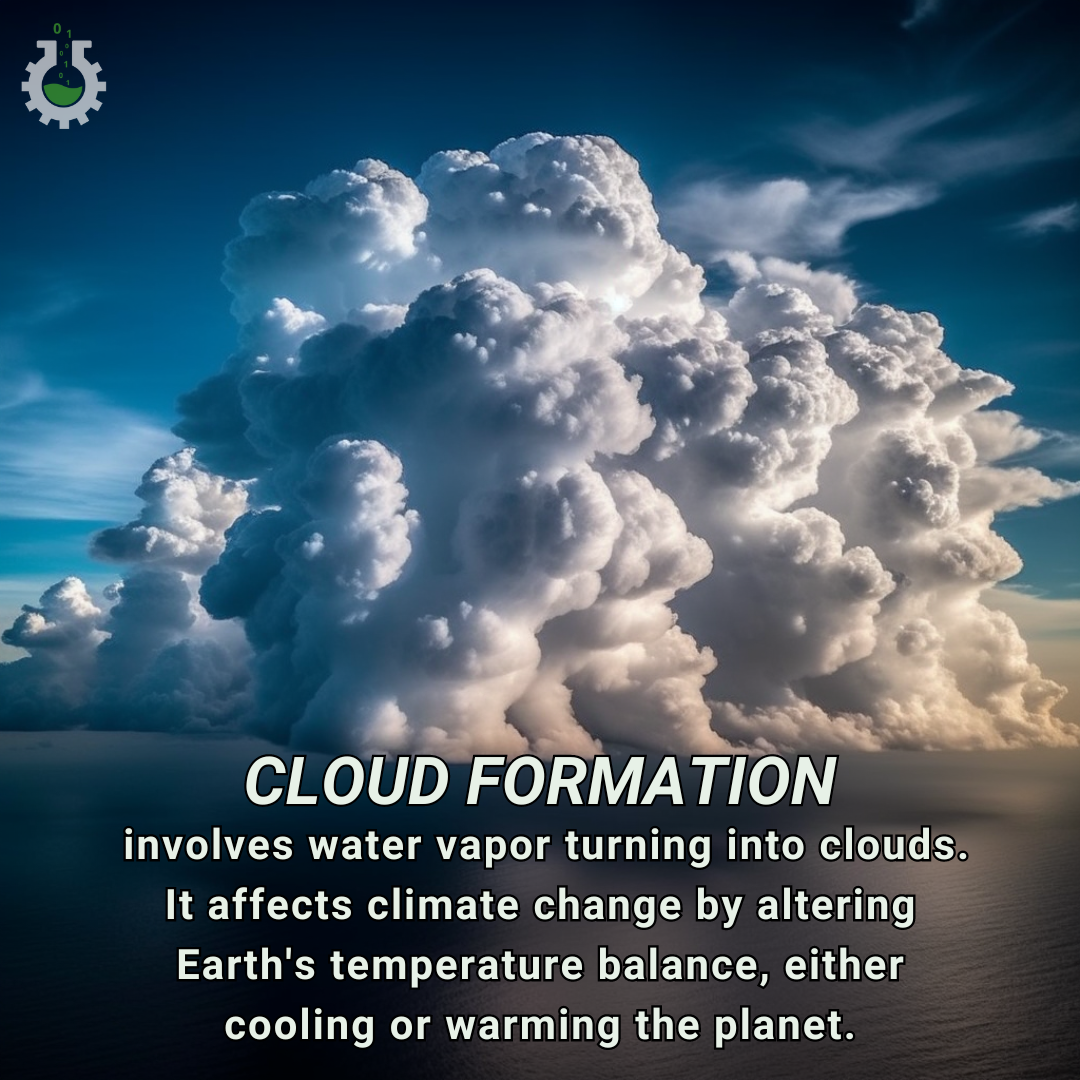July 3, 2024
Climate Change Poster Collection of the Day – Cloud Formation
Book a Demo
Today’s Climate Change Poster Collection highlights Cloud formation, a fundamental atmospheric process that involves the condensation of water vapor into tiny liquid droplets or ice crystals, which cluster together to form clouds. This process begins when warm, moist air rises and cools to its dew point, causing the water vapor to condense around microscopic particles known as cloud condensation nuclei (CCN). Clouds play a crucial role in Earth’s climate system by influencing both the energy balance and water cycle.
Clouds are natural regulators of Earth’s temperature, acting as both reflectors and insulators. They reflect a significant portion of incoming solar radiation back into space, a phenomenon known as the albedo effect, which helps to cool the planet. Conversely, clouds also trap longwave radiation emitted by the Earth’s surface, preventing it from escaping into space and thereby contributing to the greenhouse effect. This dual role makes clouds a critical factor in climate dynamics, yet their net impact on global warming remains a complex and hotly debated topic among scientists.
The formation, type, and distribution of clouds are influenced by various factors, including atmospheric temperature, humidity, and the presence of aerosols. Climate change, driven by increased concentrations of greenhouse gases, alters these atmospheric conditions, which in turn affects cloud properties and behavior. For instance, warmer temperatures can enhance the capacity of the atmosphere to hold moisture, potentially leading to more extensive cloud cover. However, the type of clouds that form under these conditions can vary, with some types contributing more to cooling and others to warming.
High-altitude cirrus clouds, for example, are thin and wispy and primarily trap heat, exerting a warming influence. In contrast, low-altitude stratus clouds are thick and widespread, reflecting more sunlight and thus having a cooling effect. The balance between these different cloud types and their respective impacts on the climate is a delicate one. Changes in cloud cover and composition can lead to feedback mechanisms that either amplify or mitigate global warming.
Moreover, the role of aerosols in cloud formation adds another layer of complexity. Aerosols, which can originate from natural sources like volcanic eruptions or human activities such as fossil fuel combustion, serve as nuclei around which cloud droplets form. Increased aerosol concentrations can lead to the formation of smaller, more numerous cloud droplets, enhancing cloud reflectivity and potentially cooling the Earth’s surface. However, aerosols can also absorb sunlight and heat the atmosphere, influencing cloud formation in ways that may counteract their cooling effects.
Understanding the intricate interplay between cloud formation and climate change is crucial for improving climate models and making more accurate predictions about future climate scenarios. Current climate models struggle to accurately simulate clouds and their effects, leading to uncertainties in climate projections. Research efforts are ongoing to better understand cloud microphysics, cloud-aerosol interactions, and the various feedback mechanisms involved.
Cloud formation plays a pivotal role in the Earth’s climate system by regulating temperature and precipitation patterns. The complex and multifaceted nature of clouds makes them both a challenge and a key area of focus in climate science. As our understanding of cloud dynamics improves, so too will our ability to predict and mitigate the impacts of climate change, paving the way for more effective climate policies and strategies.
Discover an inspiring collection of climate change poster.



